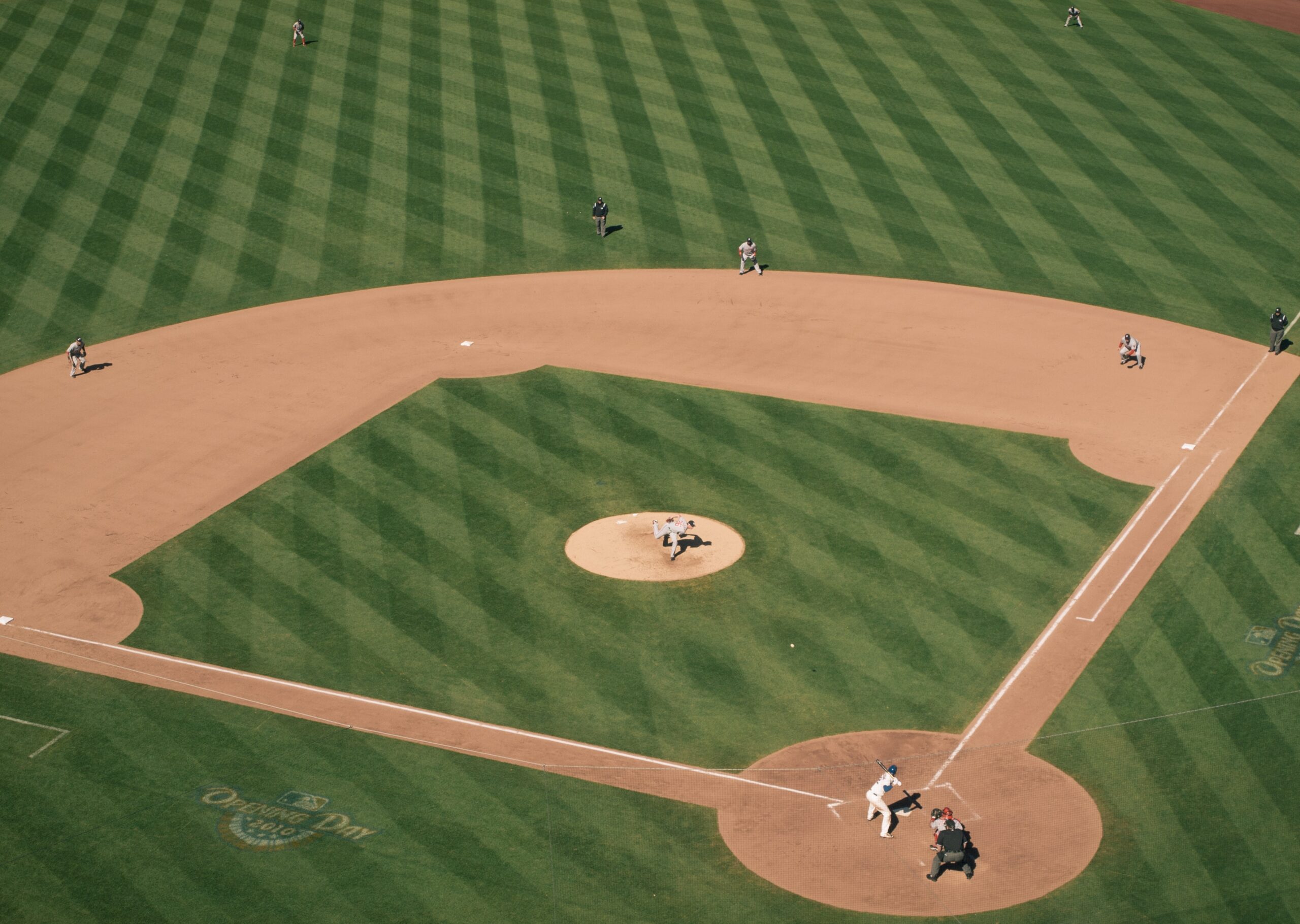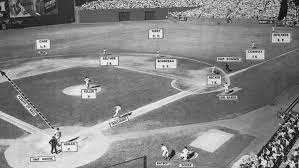Baseball has seen a major change in defensive strategies and alignment over the last decade. Mainly due to analytics and data for each batter and situation. If you are unfamiliar with the shift or why some players move around the infield or even the outfield so much. You might wonder, what is the shift in baseball?
In baseball, the shift is a defensive strategy employed by teams to improve their chances of successfully fielding balls hit by certain players. This tactic involves repositioning infielders based on a player’s hitting tendencies, increasing the likelihood of catching a hit ball and reducing gaps in the defense.
The shift typically consists of moving three infielders to one side of second base, but there are various ways to make changes in the players’ positions.
For example, a team may have a second baseman playing deep, while everyone else stays in their usual spots. With the increasing use of analytics in baseball strategy, teams are able to make data-driven decisions when applying shifts against specific batters, aiming to limit their offensive impact.
Contents
The Shift in Baseball
Historical Overview
The concept of the shift in baseball originated nearly 90 years ago, when opposing managers repositioned their outfielders to combat the immense pull power of Philadelphia Phillies’ outfielder Cy Williams in the 1920s. Over time, shifts have evolved into more extreme forms, influencing modern baseball tactics.
Defensive Positioning
In its simplest form, a shift involves moving three or more infielders to one side of the diamond. The primary goal is to counter the batting tendencies of certain hitters, making it more difficult for them to get on base.
There are different variations of shifts. Some teams may opt for a second baseman to play deep while the other infielders maintain their standard positions. Others may place the shortstop behind the pitcher, not quite to the right of second base.
As the use of shifts became more prevalent, particularly against left-handed hitters, Major League Baseball introduced new rules in 2023 to curb extreme shifts. Players must now adhere to specific positioning restrictions, ensuring a more balanced playing field for hitters.
Reasons for the Shift
Advanced Analytics
The advent of advanced analytics in baseball has played a significant role in the increased use of the shift. Teams have access to extensive historical data on each hitter, which helps them strategically position their infielders to increase the likelihood of recording outs on ground balls and low line drives. This data-driven decision-making process has led to the widespread adoption of the shift as a defensive strategy in Major League Baseball.
Hitter Tendencies
Hitter tendencies are another key factor in the emergence of the shift. Some hitters have a propensity to hit balls to one particular side of the field, known as pull-side hitting. This makes it easier for the defense to predict where the ball is likely to be hit, allowing them to prepare accordingly by shifting their infielders into the path of the hitter’s preferred hitting zone. This strategy has proven particularly effective against left-handed hitters, who are more prone to hitting ground balls and low line drives to the right side of the infield, making them prime targets for defensive shifts.
In conclusion, the shift has grown in popularity due to the advancements in analytics and the ability to exploit hitter tendencies. Teams have identified these patterns and now regularly employ defensive shifts as a result, changing the dynamic of the game and altering the way opposing teams approach their offensive strategies.
Effectiveness of the Shift
Impact on Batting Averages
The shift in baseball has been employed by teams to improve their defenses against hitters, particularly those with pull-side tendencies. It is primarily effective against pull-side ground balls and low line drives, causing batting averages of affected hitters to drop. This impact is especially felt by left-handed batters, who are more prone to hitting these types of balls.
Shift Strategy in Action
In order to enhance its effectiveness, fielding teams position their players where the opposing batter most frequently hits balls in play. This is done by analyzing batted ball data and adjusting the defensive arrangement accordingly. The percentage of plate appearances with a shift has been on the rise, going from 13.7% in 2016 to 30.9% in 2021, showing how it has become a more prevalent defensive tactic.
Contrary to popular belief, research has shown that shifts may in fact contribute to an increase in runs scored, rather than curb them, as they reduce the number of fastballs seen by hitters, allowing them to become more aggressive at the plate.
The controversy around the shift stems from concerns about its impact on the entertainment value of the game, with Major League Baseball owners arguing that it has a negative influence on this aspect.
Opposing Views and Criticisms
Purists vs. Progressives
The debate around the shift in baseball often falls along the lines of purists vs. progressives. Purists argue that the shift undermines the traditional aspects of the game and detracts from its enjoyment. They assert that skilled hitters should not be penalized for hitting into a defensively aligned infield, nor should they have to alter their hitting approach to counteract this defensive strategy.
Major League Baseball is introducing a slate of new rules for the 2023 season. A pitch clock, limits on pitcher disengagements, bigger bases and infield shift limits.
Here’s a breakdown.https://t.co/ni0nK0ula7 pic.twitter.com/ew0fS0QvZj— The Associated Press (@AP) February 24, 2023
In contrast, progressives embrace the shift as an example of how the sport is evolving. They argue that the shift is a smart, defensive strategy that forces hitters to adapt and strive for improvement. Teams use their analytics departments to help inform them about the best positioning for individual hitters, and MLB has seen a significant increase in shifts deployed over the past decade.
The progressive mindset is more focused on the development and use of advanced metrics that support a team’s efforts to gain an edge.
Implications on Gameplay
The shift has had a notable impact on gameplay, such as increasing strikeouts and reducing the number of ground-ball hits through the infield. Several critics argue that the shift negatively affects offensive strategy and lessens the entertainment value, as strategic hits and small ball become less successful due to defensive positioning.
On the other hand, some analysts contend that the shift encourages players to develop their skills, such as hitting to the opposite field or bunting.
They maintain that baseball should continually evolve and test its players, as this ultimately helps to elevate the game’s overall level of competition and skill. Still, opinions vary and there is no consensus on whether the shift’s long-term implications for the sport are positive or negative.
Future of the Shift in Baseball
Potential Rule Changes
In an attempt to reduce extreme shifts and increase game dynamics, Major League Baseball (MLB) has introduced rule changes for the 2023 season. One of the key changes focuses on the shift, requiring four infielders to be on the dirt and two on each side of second base when a pitch is thrown
Moreover, the league aims to restrict the positioning of defensive players, preventing them from arranging in a way that defeats the purpose of traditional baseball defense. These changes are expected to influence team strategies and alter the way managers utilize their players.
Evolving Strategies
As a result of the new rules, teams will have to adapt their defensive strategies, resulting in a potential resurgence of previously diminished hitting approaches. For instance, hitters may need to focus more on hitting the ball to the opposite field, avoiding the shift alignment, and capitalizing on gaps left by restricted defensive positioning.
This adjustment could also encourage a rise in small ball strategies, such as bunting and hit-and-run plays, as teams attempt to exploit the limitations imposed on shifts. The combination of both traditional and new strategies may enhance offensive production and foster increased competitiveness among teams.
In conclusion, the future of the shift in baseball is bound to be impacted upcoming rule changes and evolving strategies. The introduction of these restrictions will likely alter the game’s dynamics, forcing teams to adapt to new defensive setups and consider a wider range of offensive tactics.



